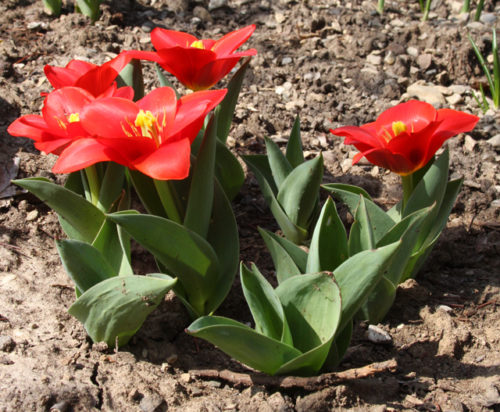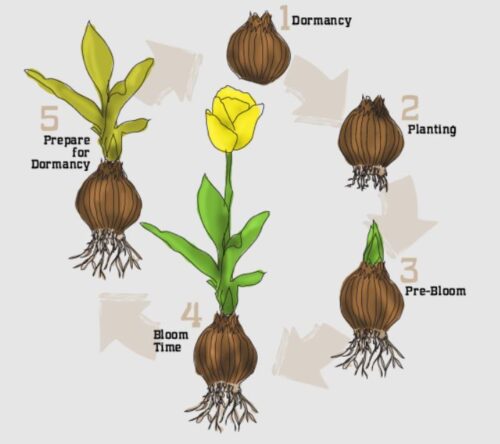Why are My Tulips Stunted?
Spring has arrived…we think. It sure is hard to know these days, isn’t it? Here in the Midwest, we can experience a wide range of temperatures over weeks. One of the most frequent questions I receive in spring has to do with the growth habits of spring-blooming bulbs. I hear from gardeners, “My tulips are beautiful, but I expected them to be much taller. Why are my tulips stunted?” What is the problem with tulips this year?
Tulip Growing Conditions and the Impact of Mild Winters
 Tulip bulbs, like most other fall-planted bulbs, require a “chilling period” of anywhere from 12-16 weeks with temperatures consistently 55 degrees F or below. If any of these bulbs fail to receive an adequate amount of chilling, their blooms will be impacted. Another weather factor that impacts spring blooms is if there is an interruption of warmth during this chilling period. The chilling period is the process within the bulb that produces the bloom.
Tulip bulbs, like most other fall-planted bulbs, require a “chilling period” of anywhere from 12-16 weeks with temperatures consistently 55 degrees F or below. If any of these bulbs fail to receive an adequate amount of chilling, their blooms will be impacted. Another weather factor that impacts spring blooms is if there is an interruption of warmth during this chilling period. The chilling period is the process within the bulb that produces the bloom.
When the United States experiences mild winters, like in 2011, 2012, 2015, 2016, 2017, 2023, and 2024, and does not receive a “typical winter,” this can impact flower bulbs’ growth and blooms. In the case of tulips, mild winters and rollercoaster temperatures can impact the blooms. Therefore, while it’s not a fun conclusion to come to, it should not be extremely surprising that many tulips do not perform as expected when we experience a mild winter.
How to Prevent Short and Stunted Tulips
So they say knowledge is power, right? Now that we understand why this happened, what can we as gardeners do about it? Unfortunately, the answer is not much. Consider the lack of control we have over the weather conditions and patterns. There is no way to create an artificial environment for your plants and bulbs planted outdoors unless you were somehow able to encapsulate your entire landscape in the confines of a bubble, similar to the houses the Jetsons resided in.
 The best thing you can do for your tulips is give them patience. Keep in mind that even though their show may be less than satisfactory this year, they still need to progress through the stages of sprouting, blooming, and then entering into dormancy. This means leaving the foliage in the ground until it has dried and browned to a point when it can be easily removed from the bulb without causing any uprooting. This will allow the plant to continue to make food for the bulb, encouraging lush growth and blooms for the following season. Once they complete their cycle this spring and summer, they will (hopefully) receive a proper fall and winter this coming year and return bigger and better than ever in the following spring season!
The best thing you can do for your tulips is give them patience. Keep in mind that even though their show may be less than satisfactory this year, they still need to progress through the stages of sprouting, blooming, and then entering into dormancy. This means leaving the foliage in the ground until it has dried and browned to a point when it can be easily removed from the bulb without causing any uprooting. This will allow the plant to continue to make food for the bulb, encouraging lush growth and blooms for the following season. Once they complete their cycle this spring and summer, they will (hopefully) receive a proper fall and winter this coming year and return bigger and better than ever in the following spring season!
P.S. Feel like you missed out on the spring show of flower bulbs this year due to the odd weather? Why not try some spring-planted bulbs and enjoy blooms this summer!


